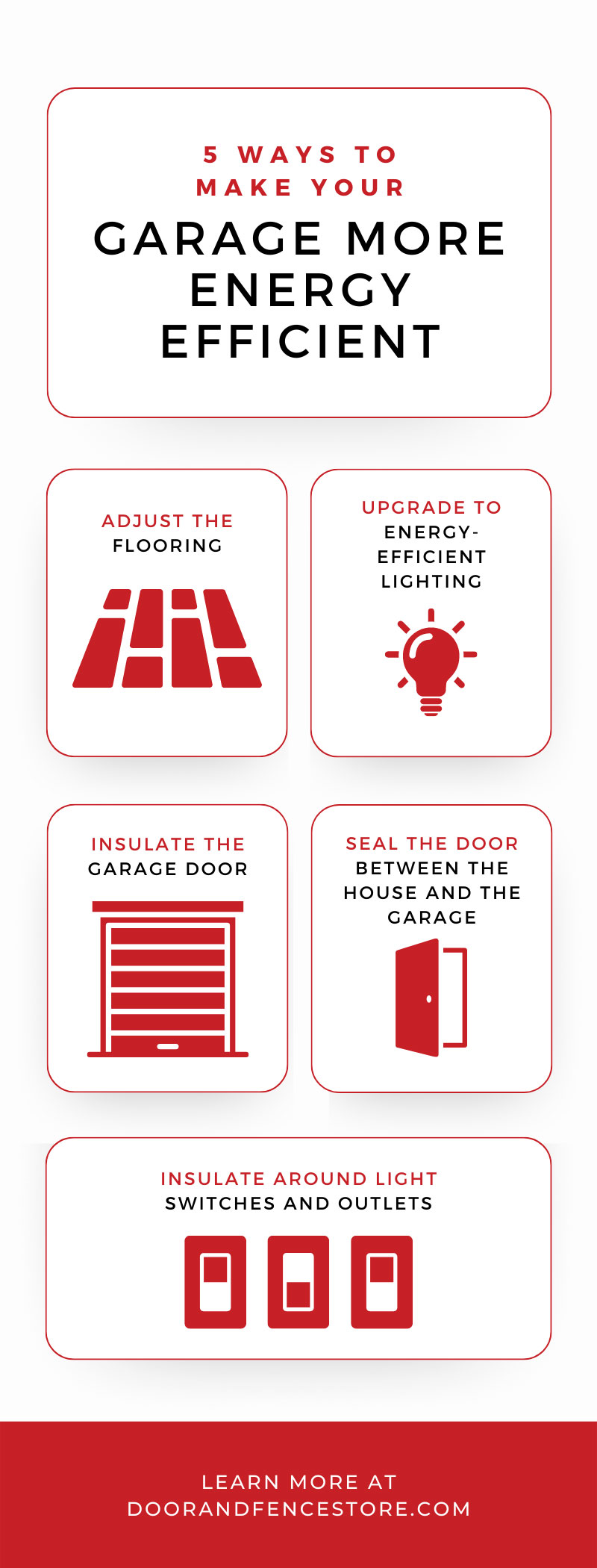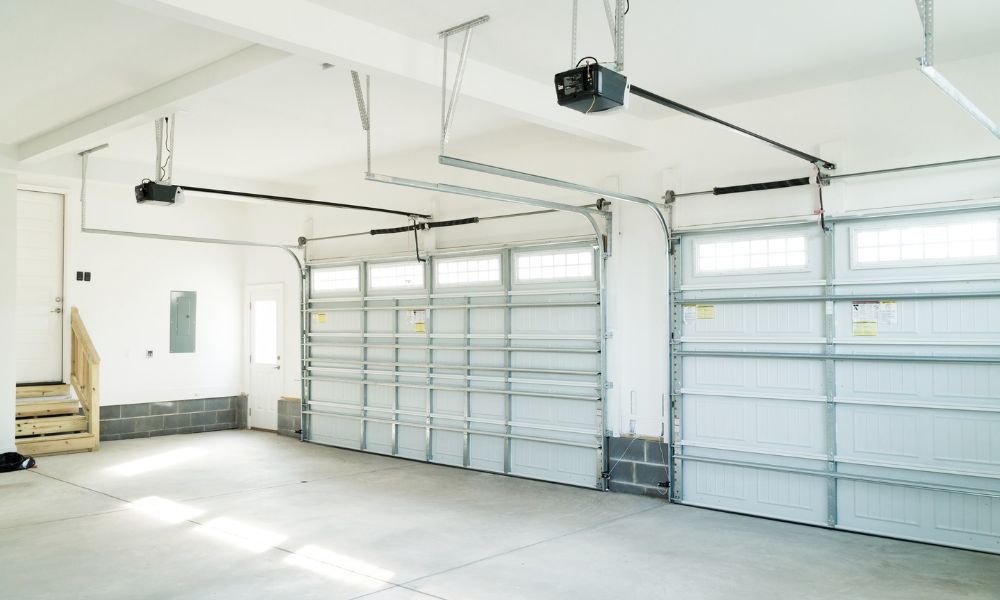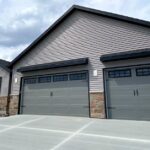Garages are versatile spaces that can do more than store a car or other large home items. While a garage is an incredible addition to your home, you might endure a couple of issues here and there with the design of your space.
Energy efficiency is using less energy to perform the same tasks, which reduces pollution and lowers monthly energy costs. More and more homeowners focus on the energy efficiency of their spaces, whether to save money or appeal to buyers.
If your monthly energy bills are higher than you might like or you want to help the environment, one place to start is in your home’s garage. Continue reading about the five ways to make your garage more energy efficient!
Adjust the Flooring
Garages include concrete floors that don’t seem to insulate the space very well. Small cracks in the concrete can affect energy efficiency more than you might expect. One option is to repair the cracks to avoid air leaking through, but there is more you can do to improve the energy efficiency of your garage!
An alternative to concrete flooring is to install luxury vinyl tiles. This flooring is one of the most energy-efficient options because it features multiple layers that block the travel of air through the surface. Don’t worry about the weather or other stains because luxury vinyl tiles are water-resistant and easy to maintain.
The surface will withstand the weight of your car and foot traffic through the area. Luxury vinyl tiles will last for several years and help keep your home’s energy costs low.
Upgrade to Energy-Efficient Lighting
Upgrading the lighting in the garage to LED lights is another way to make your garage more energy efficient. Incandescent bulbs are what some might consider the average light bulb. You might recall sitting under a light and feeling the warmth of the bulb. LEDs use 95 percent of the energy used for producing light, while incandescent bulbs produce both light and heat.
LEDs are long-lasting and more energy efficient than incandescent bulbs. They don’t require high energy levels to function properly; instead, they only need low voltage levels to emit bright lights that won’t disappoint.
It doesn’t matter which style of LED lighting you install. Whether you opt for wraparound lights, strip lights, or high bay lights, you’re taking a step toward the right decision. Over time, you’ll notice a decline in your energy bills because of the incredible energy efficiency of these bulbs!
Insulate the Garage Door
Just like in the rest of your home, garages lose heat in the weakest areas of the space. In the winter, windows and the garage door transmit cold air. In the summer, you might notice the garage is very hot, especially near these weak entry points.
When an undesirable temperature leaks through the door and windows, the air will gradually flow into the connecting door from the house to the garage. You might lower the air conditioning or turn up the heat, but those steps don’t address the source of the issue.
Continuously running the heating and cooling systems will increase your bills each month. Instead of enduring this predicament, consider adding insulation or purchasing an insulated garage door.
Install Additional Insulation
If you love the design of your garage door and don’t want anything brand new, you can always install insulation on the back of the garage door. One of the best parts about this choice is that if you feel comfortable, you can tackle this project yourself rather than hire a professional. Before you start the project, you need to know which insulation materials to buy.
Polyurethane
Polyurethane is a spray foam insulation that, when sprayed from the applicator, attaches itself to the surface of the garage door. You won’t need to worry about insulating all the small crevices and inaccessible spaces of the door. Polyurethane insulation expands to cover each tiny space.
Polystyrene
Polystyrene is a uniquely assembled form of insulation that attaches to the backside of the garage door. You can choose from a variety of thickness levels to determine the level of insulation.
Hiring a professional to install polystyrene insulation is ideal because, unlike polyurethane insulation, this option requires additional work to properly fit your garage door.
Insulated Garage Door
If you don’t want the hassle of installing insulation, consider purchasing a garage door replacement with a pre-insulated garage door. You will enjoy the garage’s new exterior appearance and the high-quality insulation it provides the space.
Seal the Door Between the House and the Garage
Do you notice air flowing through the garage and into the house? The garage is often a different temperature that you’re actively trying to avoid indoors. Insulation helps resolve the bulk of the issue, but sealing up the door that connects the house to the garage will further remedy this problem.
Draft Stopper
A draft stopper is a quick fix to stop air from passing through the crack underneath the door. The thick cloth material consists of rice, beans, or batting. Place it at the bottom of the door inside your house. Find a draft stopper that fits the length of the base of the doorway to start reducing airflow and warming your home!
Weather Stripping
Draft stoppers are efficient, but they’re not a permanent energy-efficient solution. Consider weather-stripping the door from your house to the garage for an effective, long-term fix.
Weather stripping helps block cold air from passing through the door and prevents future cracks. Before purchasing any materials, measure around the door to determine the length and width necessary for the weather stripping. Once you know the dimensions, look at the different materials you can choose from.
Vinyl
Vinyl is an effective barrier you can use to seal doors from cold air. It’s more costly than other materials, but it’s an excellent choice for managing temperatures between your garage and your home’s interior. These weather strips are simple to install—just peel away the protective cover and stick them in the proper position.
Foam
Another popular weather-stripping material is foam. It’s very adaptable to all different types of doors, particularly those with a variety of widths and thicknesses. Foam can be a challenge to install, but it’s doable! With its affordable cost and efficient qualities, foam is an ideal material for reducing the airflow under your door.
Insulate Around Light Switches and Outlets
The last method to help create a more energy-efficient garage is to insulate around the light switches and outlets. This step may sound absurd and unnecessary, but it makes more of a difference than you might realize.
Small spaces or cracks can appear around light switches and outlets. Inspect each one to see if there are any noticeable gaps. Use a form of insulation or a sealant in the open areas to limit airflow from outside into the garage.
This insulation may seem like an insignificant change, but every little bit helps when it comes to energy efficiency.
Garages are spaces within the home that many homeowners can neglect. With these energy-efficient updates, you’ll love your garage and your home even more than before!









